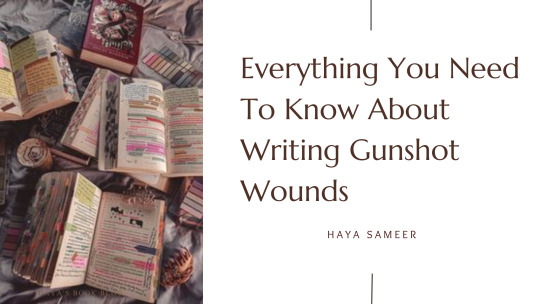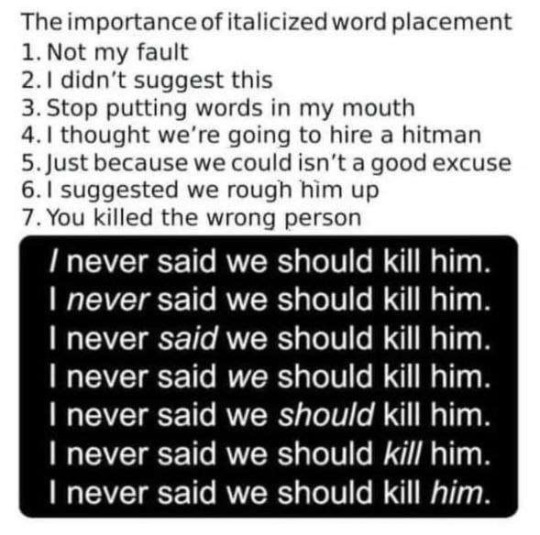Text
Writing ideas
Some writing ideas if you don´t know what to write about.
1. "Time-Traveler's Journal": Explore a story where a journal enables time travel, and its pages reveal secrets of the past and future to those who possess it.
2. "Virtual Reality Realities": Delve into a world where virtual reality simulations become a part of daily life, exploring the consequences and the blurred lines between real and virtual.
3. "The Library of Lost Stories": Imagine a magical library that collects forgotten stories, and follow a group of characters as they uncover tales that should never have been lost.
4. "Quantum Love Letters": Dive into a romance where love letters transcend time and space, connecting two souls across multiple dimensions.
5. "The Sentient City": Uncover a city with a mind of its own, where buildings communicate and influence events, and the urban landscape becomes a living, breathing entity.
6. "The Memory Exchange": In a society where memories can be traded, follow a protagonist on a journey to recover their stolen past and the secrets hidden within.
7. "The Elemental Heir": Explore a world where people are born with the power to control one of the elements and join a young heir in discovering their elemental abilities.
8. "The Clockwork Companions": Step into a steampunk realm where clockwork creatures serve as loyal companions, raising questions about the nature of artificial intelligence and friendship.
9. "The Echo Chamber": In a near-future setting, a mysterious technology creates an echo chamber where truths and lies blend, forcing the characters to question their reality.
10. "The Seer's Sketchbook": Follow a seer who can predict the future through their artwork, uncovering the unfolding destiny of the world one sketch at a time.
794 notes
·
View notes
Text
Write Meow! 4 Writing Tips Cats Teach Us

Did you know cats have a lot of wisdom about the writing process? It's because of their cat lifestyles! NaNo Participant Megan Jenkins lets us know what our wise cat friends can teach us about writing.
“Cats are too human-like,” my friend complained while explaining to my cat-lady-self why she’s a dog person. I laughed, but after pondering my cat’s behavior, I realized just how much cats can teach us about becoming a better human, and more importantly, a better writer. (Arguably.)
Here are a few writing lessons we can learn from cats.
1. Have a Routine
As someone who rolled her eyes at this advice for years, I still cannot believe that my cat hoodwinked me into a morning routine.
My cat was right though.
Writing for 15 minutes during my cat’s breakfast has me writing more than ever before. While 15 minutes may not seem like a lot, giving yourself prompts for the next session and having consistent sessions helps you accomplish more than you would think.
Also, cats are great accountability partners. If you stray from their routine, they will meow loudly and slap you with their paw. (Or is that just my cat?)
2. Take Breaks
Before my cat, my writing process was to write for hours at a time on a random weekend day. This process was exhausting and made me feel like I had to block an entire day for writing, which is becoming increasingly impossible.
However, cats inherently know the importance of taking breaks and stepping away from screens, which is why they sit in front of our keyboards and computers when we spend too much time on them (I assume).
One way to remember to take breaks is to participate in writing sprints, in which writers write together for a set time.
For any fellow introverts, the Pomodoro Technique, in which you work for 25 minutes then break for 5 minutes with a longer break after four rounds, has been shown to increase productivity.
You might hesitate to try sprints or Pomodoro like I did because you love to emerge yourself in your writing for hours. However, I have found that both methods have built my endurance, allowing me to write longer.
Plus, the frequent breaks to entertain my cat prevent her from hijacking my keyboard.
3. Prioritize Meals
Cats are grazers, meaning they eat several small meals throughout the day, which they do not like to miss.
Unlike my cat, I skipped meals all the time. I couldn’t be like Pippin in The Lord of the Rings asking for second breakfast while on an important quest!
However, modeling my cat, I now prioritize my eating. While it may not work for everyone, eating throughout the day gives me energy to write after work, not just rewatch The Lord of the Rings.
Since you are likely not on a quest to eliminate all evil, try prioritizing eating, like cats (and hobbits) do, and see how it impacts your writing.
4. Focus on the Present
Do you sometimes focus so much on the past or the future that you forget about the present? I do. With NaNoWriMo especially, I tend to over-plan and dwell on any minor failures.
Cats don’t do this. Cats live in the present, and while cats learn from their past, they do not dwell on their failures or worry about the future. Instead, cats deal with problems when they arise.
Similarly, do not torture yourself if you have a bad writing day (or week or month) or worry about every what-if. Instead, use the past to improve your current writing session.
As NaNoWriMo begins, I hope what I have learned from cats’ behavior helps remind you to have a healthier relationship with writing, which is ultimately the goal of NaNoWriMo. Besides the 50k.

Megan is a business risk and control advisor at a financial institution. The rest of her time, she spends dreaming of fantastical places. Her love for language led her to obtain a BA in English with a concentration in professional writing and an MA in Technical Communication and Rhetoric. When she is not writing, reading, or editing, she also enjoys traveling, watching movies, and spending time with her family and cat, Sophie. Connect with her on Linkedin or Goodreads!
Photo by Pixabay
246 notes
·
View notes
Text
small reminders you writers might need
Your story does not have to be perfect from the start
A shitty draft is still a valuable draft
A failed story does not equal a failed writer
Your creativity, thoughts and ideas are irreplaceable, and you are more than capable of creating something extraordinary
Rome wasn’t built in a day, give yourself time to grow
You will figure everything out, take a break if you need one
6K notes
·
View notes
Text
#historical fantasy#black american literature#black american author#asian american author#asian american literature#latine author#latine literature
0 notes
Text
0 notes
Text
A LIST OF MAGICAL ABILITIES/SUPER POWERS
this is for fantasy/sci-fi writer who want to give their characters cool powers !!
enhanced senses: hearing, tasting, smell, sight, and touch
enhanced strength/super strength
super speed
shape shifting (the ability to change into any form; whether it may be animals, people, or objects)
aligist (the ability to understand every language)
clairvoyance (the ability to perceive things or occurrences that are beyond normal sensory contact)
precognition (the ability to see the future)
telekinesis (the ability to move things by mental power)
telepathy (the ability to read someone's mind/direct transfer of thoughts from one person to another)
mind control/compulsion
teleportation
regeneration (the ability to heal quickly)
atmoskinesis (the ability to control the four elements)
- aerokinesis (the ability to manipulate air)
- pyrokinesis (the ability to manipulate fire)
- hydrokinesis (the ability to manipulate water)
- geokinesis (the ability to physically manipulate earth)
atmokinesis (the ability to control weather)
conjuring (the ability to create things out of thin air)
cryokinesis (the ability to control ice and cold things)
electrokinesis (the ability to manipulate electricity)
invisibility
necromancy (the ability to communicate the dead)
flight
magic
- necromancy/dark arts/black magic
- incantations/enchanting
- potion-making
- summoning
- transfiguration/transmutation
- divination
- illusion
- conjuration
- alchemy
- astral
- binding
- elemental
- voodoo
immortality/not aging/longer lifespan
invulnerability (the ability to be physically unharmed)
although, about the magic one; i am not really sure if i added the correct ones or if i missed more things to add (please let me know if i have to correct or add something)
1K notes
·
View notes
Text
write for yourself. put your fantasies on paper. no one knows what you are writing. no one knows what's in your head. no one is going to write it for you. if you don't write down your ideas they will disappear. if you are too scared to write your thoughts then don't write, try something different. if writing is the only way, get to writing. no one else's opinion matters. no one else's opinion will ever matter
17K notes
·
View notes
Text
Everything You Need To Know About Writing Gunshot Wounds

Welcome to the latest installment in my ongoing series on crafting realistic wounds in fiction! After covering stab wounds and burns, it's time to explore the next wound category frequently explored in fiction—gunshot wounds.
Gunshot wounds are a recurring motif in the realm of storytelling. They're something you can easily come across in every genre, however, authors often poorly portray gunshot wounds due to lack of proper research. I understand finding the right resources to aid with your writing can be hard, so here's my comprehensive guide on how to write gunshot wounds.
How To Categorise Gunshot Wounds
There are certain factors you need to consider before writing a gunshot wound. These details are instrumental in crafting a vivid and plausible narrative while avoiding plot holes. The first and most important one is identifying the type of firearm used to inflict the wound.
Picking The Right Firearm
Selecting the appropriate firearm to inflict a gunshot wound is a pivotal decision. It's not just about choosing any gun; it's about picking the right one to align with your desired outcome and the narrative's overall impact. Here's a quick guide on how to pick the right firearm.
The Impact of Firearm Selection
The firearm you choose can significantly influence the severity and appearance of the gunshot wound. Whether your goal is a graphic, gory injury or a precise, long-range shot, the choice of firearm plays a crucial role. Here are some guns you to consider:
Handguns: These are versatile and commonly used in close-quarters combat. They can result in gruesome, close-contact wounds with a higher potential for damage due to their stopping power.
Shotguns: Shotguns disperse shot pellets upon firing, making them suitable for creating a broader pattern of injuries. If you aim to depict a devastating, close-range gunshot wound, shotguns can be a fitting choice.
Rifles: Rifles are known for their accuracy at longer distances. When you need a precise, long-range shot, rifles are the go-to option. They tend to produce a cleaner wound channel, especially when used for a targeted, well-planned injury.
Choosing the Right Firearm for Your Narrative
The type of firearm you select should align with your story's objectives. If you intend to evoke visceral, gory reactions, opt for handguns or shotguns used in close proximity. On the other hand, if precision and long-range engagement are key, rifles can achieve your desired outcome.
Keep in mind that firearm selection can affect the wound's damage, trajectory, and overall portrayal in your narrative.
Categorising The Wound
Once you've identified the type of firearm, you need to establish what type of wound your character will incur.
In order to bring your character's injuries to life, it's important to first identify what you're dealing with. You can do this by categorising the injury based on several factors. For gunshot wounds, this includes the type of firearm used, the bullet's trajectory, and the specific areas of the body affected.
You can categorise your character's gunshot would into seven main categories, here's a quick breakdown of what these categories look like and the level of severity associated with them:
Penetrating Gunshot Wounds: These wounds occur when a bullet enters the body but doesn't exit. The bullet remains inside the body, causing damage along its path.
Perforating Gunshot Wounds: In this case, the bullet enters the body and exits on the opposite side. This type of wound can have a different set of implications due to the bullet's trajectory.
Ricochet Gunshot Wounds: Ricochet wounds happen when the bullet bounces off a surface before hitting the character. The nature of the surface can influence the severity of the wound.
Through-and-Through Gunshot Wounds: As the name suggests, these wounds occur when the bullet enters one side of the body and exits through the other. The trajectory can greatly affect the injury's severity.
Close-Contact Gunshot Wounds: These wounds result from the firearm being fired at extremely close range. The proximity of the gun to the body can lead to unique wound patterns and burn injuries.
Shotgun Wounds: Shotgun wounds differ from those caused by handguns or rifles. The shot pellets disperse upon firing, leading to a broader pattern of injury.
Long-Range Gunshot Wounds: When a character is shot from a considerable distance, the wound might appear different due to factors like bullet tumbling and loss of velocity.
The Anatomy of a Gunshot Wound
To create a vivid portrayal of a gunshot wound, writers need to grasp not only the external appearance but also the internal effects it has on the body. A well-executed description captures both the physical trauma and the emotional turmoil experienced by the character. Here are some symptoms you should take into consideration.
1. External Appearance and Bleeding:
Wound Size: The size of a gunshot wound can vary significantly based on the type of firearm and bullet used. Smaller calibers may leave entry and exit wounds that are relatively small, while larger bullets or high-velocity rounds can create much larger wounds. Be specific about the size, which can help readers visualize the injury.
Blood Loss: Gunshot wounds typically result in bleeding. The severity of bleeding depends on factors like the wound's location, the size of the blood vessels damaged, and the bullet's trajectory. Mention the amount of blood, but avoid excessive gore unless it serves a specific purpose in your narrative.
Coughing Up Blood: If the gunshot wound affects the chest or lung area, characters may cough up blood. This symptom often signifies a more critical injury and can add drama to your story.
2. Internal Damage and Symptoms:
Pain: Gunshot wounds are painful, and the character should express this pain through their actions, dialogue, and internal thoughts. Describe the sharp, burning, or throbbing sensations as they resonate through the character's body.
Shock: Depending on the severity of the wound, shock can set in. The character may appear pale, sweaty, and disoriented. This state of shock can impact their actions and decisions.
Loss of Function: A gunshot wound may impair the use of the injured body part. Describe any loss of function, such as the inability to move a limb or use it effectively.
Fainting: In extreme cases, characters may faint due to the pain, blood loss, or shock. Be sure to contextualize this within the narrative, as fainting can have significant consequences for the character.
By diving into the details of a gunshot wound's anatomy, you can craft a compelling and realistic portrayal that draws readers into the character's harrowing experience. I haven't exactly covered every symptom out there, but these are the major ones you should take into account when writing.
Medical Assessment and Treatment
Once you've established your gunshot wound, it's now time to focus on the aftermath. One of the main factors to consider is the medical process that follows. If your character is supposed to die from the gunshot then you could probably skip this section, but if they're alive here are things you need to consider.
1. Initial Assessment:
Scene Safety: In a real-life scenario, safety is paramount. First responders will ensure the scene is secure before approaching the injured person. Consider factors like the presence of firearms, potential threats, and the safety of medical personnel.
ABCs of Assessment: Medical professionals follow the ABCs—Airway, Breathing, and Circulation. Writers can reflect this in their storytelling by highlighting the character's ability to breathe, cough, or speak after being shot.
Vital Signs: Mentioning vital signs like heart rate, blood pressure, and oxygen saturation can help convey the character's condition and the urgency of their medical treatment.
2. Trauma Assessment:
Focused Assessment: Medical personnel perform a thorough examination to identify the gunshot wound's location, entry and exit points, and any associated injuries. This assessment informs their treatment plan.
Imaging: Depending on the complexity of the injury, X-rays or other imaging may be required to visualize the bullet's trajectory and any potential damage to internal organs or bones.
3. Treatment:
Bleeding Control: Stopping the bleeding is a top priority. This may involve applying pressure, packing the wound, or even tourniquet application in extreme cases.
Wound Care: Depending on the wound's severity, cleaning and suturing may be required. The character's response to this procedure can add an element of realism to your narrative.
Pain Management: Gunshot wounds are excruciatingly painful, and medical personnel will often administer pain relief or anesthesia during treatment.
Monitoring and Observation: Patients with gunshot wounds require careful observation and monitoring for signs of infection, complications, or changes in their condition.
By accurately portraying the medical assessment and treatment of gunshot wounds, you not only enhance the authenticity of your writing but also depict the physical and emotional toll such injuries can take on your characters. This attention to detail helps your readers connect more deeply with the story.
The Psychological Impact
Gunshot wounds don't just inflict physical harm; they also leave lasting emotional and psychological scars. It is important to note that the extent of the psychological impact on your characters will heavily rely on various factors.
For example, you need to consider whether or not this injury is something normal for them. Do they work as a spy, assassin, or other such roles that would mandate such dangerous injuries? You also need to consider who shot them. Does this wound come with emotional damage as well? Think of Aaron Warner’s reaction to Juliet shooting him.
If you’re sure your character will have some extent of a psychological impact, here are some factors you should consider.
1. Shock and Denial:
Immediate Response: Characters who have been shot may initially experience shock and denial. This can manifest as disbelief, emotional numbness, or a surreal sense of detachment from the situation.
Physical Symptoms: Shock can lead to physical symptoms like trembling, chills, or even fainting. Incorporating these details can make the character's reaction more genuine.
2. Fear and Anxiety:
Survivor's Guilt: Characters may grapple with survivor's guilt if they are the only ones to emerge unscathed in a violent encounter.
Anxiety: The threat of recurrence or the fear of returning to the location where the shooting occurred can trigger anxiety and panic attacks.
3. Post-Traumatic Stress Disorder (PTSD):
Flashbacks and Nightmares: Characters who have survived a gunshot wound may experience recurring flashbacks and nightmares, vividly reliving the traumatic event.
Hypervigilance: PTSD can lead to hypervigilance, where characters are constantly on edge, expecting danger at every turn.
4. Depression and Isolation:
Emotional Withdrawal: Characters may withdraw from social interactions, experiencing feelings of isolation and sadness.
Emotional Numbness: Some may describe feeling emotionally numb, unable to experience joy or pleasure.
5. Recovery and Resilience:
Therapeutic Support: In your storytelling, consider how characters seek therapy or counseling to cope with their emotional scars. Therapy can be a path toward recovery and resilience.
By addressing the psychological impact of gunshot wounds on your characters, you create more layered and relatable individuals within your narrative. This depth allows readers to connect with the characters on a profound emotional level.
I hope this blog on Everything You Need To Know About Writing Gunshot Wounds will help you in your writing journey. Be sure to comment any tips of your own to help your fellow authors prosper, and follow my blog for new blog updates every Monday and Thursday.
Looking For More Writing Tips And Tricks?
Are you an author looking for writing tips and tricks to better your manuscript? Or do you want to learn about how to get a literary agent, get published and properly market your book? Consider checking out the rest of Haya’s book blog where I post writing and publishing tips for authors every Monday and Thursday! And don’t forget to head over to my TikTok and Instagram profiles @hayatheauthor to learn more about my WIP and writing journey!
2K notes
·
View notes


